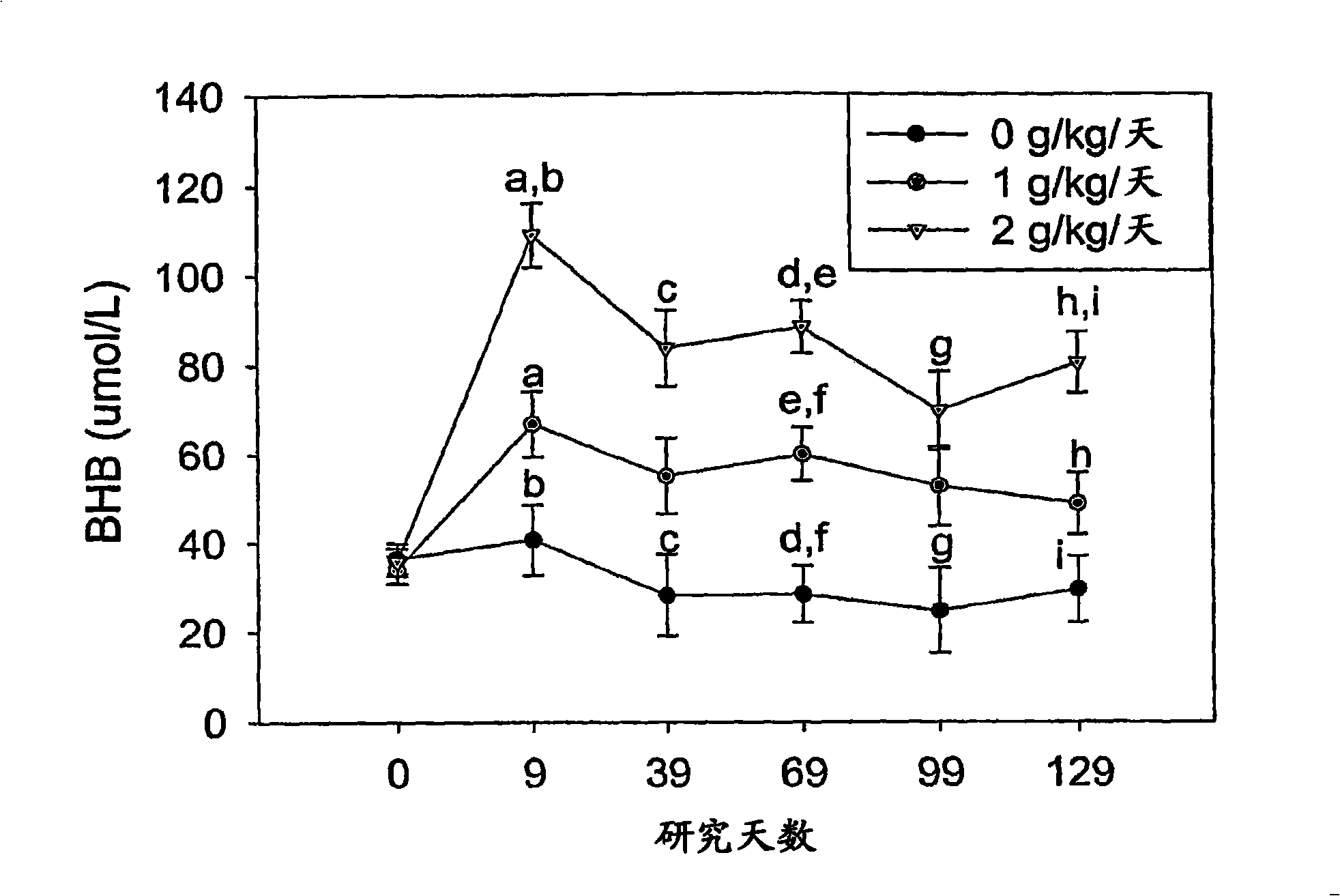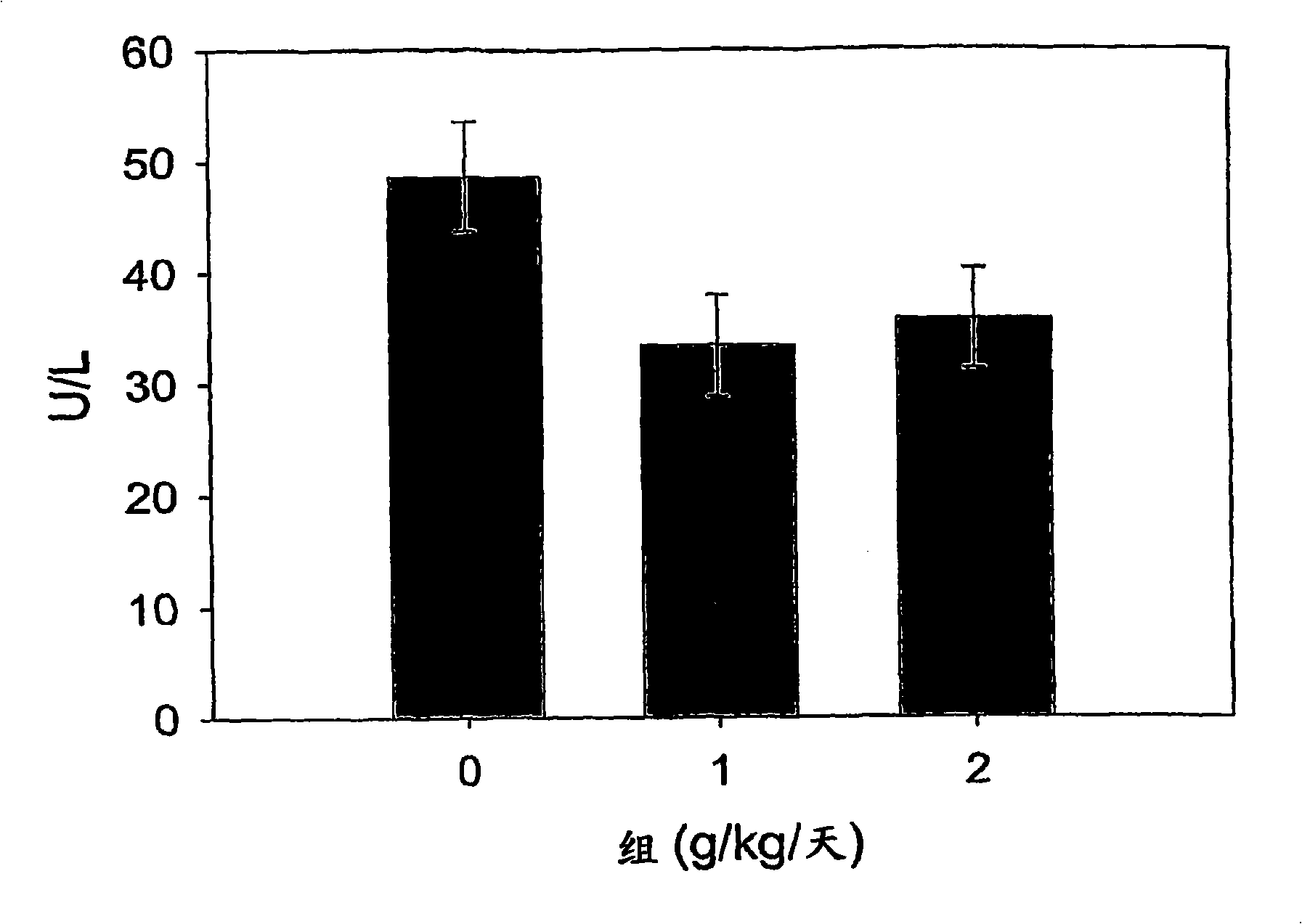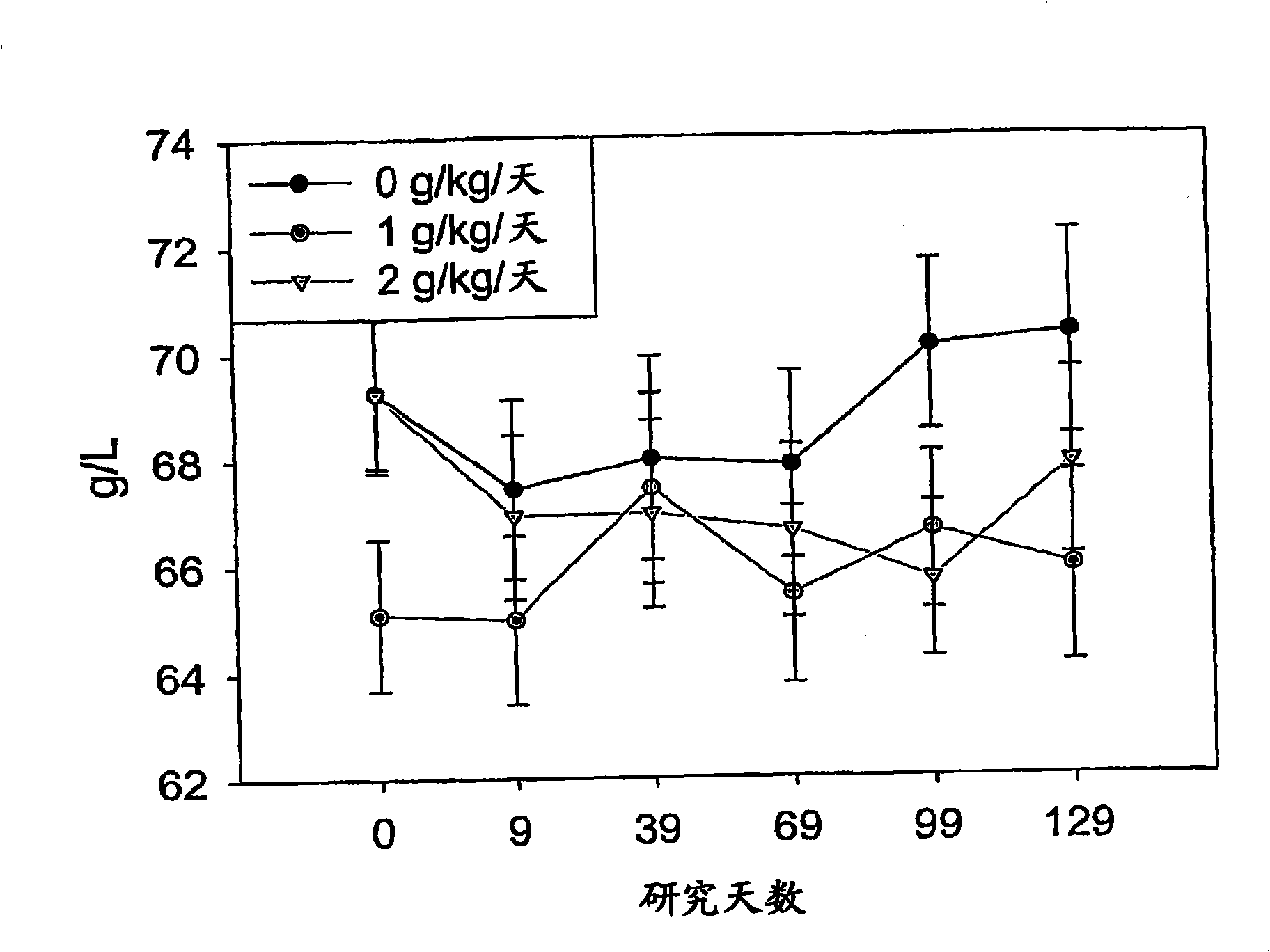Compositions and methods for preserving brain function
A composition and functional technology, applied in the direction of drug combination, function and application of food ingredients, etc., can solve problems such as loss of urination control or defecation control, getting lost or confused, and reduced daytime activities
- Summary
- Abstract
- Description
- Claims
- Application Information
AI Technical Summary
Problems solved by technology
Method used
Image
Examples
Embodiment 1
[0203] animals and diet
[0204] Fifty-four animals aged 8-11 years were divided into three cognitively equal treatment groups using error-criteria based on object discrimination and reverse learning tests (Table 1). The animals did not show any pathological signs and were considered healthy geriatric dogs. The first group, the control group, was fed a basal diet consisting of approximately 10% water, 26% crude protein, 16% fat, and 6% ash without MCT supplementation. The basal diet consists of ingredients commonly used in companion animal diets such as brewer's rice, chicken, whole wheat, poultry by-product diet, corn gluten diet, corn kernels, animal fat, corn bran, dried egg products, flavor enhancers, vitamins and minerals. The MCTs administered to the animals in these experiments had the following general formula:
[0205]
[0206] Among them, in these applications, more than 95% of R1, R2 and R3 are fatty acids containing 8 carbon atoms in the carbon backbone and...
Embodiment 2
[0217] blood analysis
[0218] Hematology and biochemical tests of blood were performed at baseline on day 9 and approximately every 30 days until the animal completed cognitive testing. Blood chemistry and hematology are monitored as an index of general health and as a measure of the animal's response to treatment. Collect and save other serum and plasma samples. Animals did not all receive the same number of blood samples because animals did not complete the study at the same rate. Therefore, only hematological and biochemical data obtained on study days 0 (T0), 9 (T1), 39 (T2), 69 (T3), 99 (T4) and 129 (T5) were included in this analysis middle.
[0219] Between-subjects variable by treatment group (0 g / kg / day vs. 1 g / kg / day vs. 2 g / kg / day) and time point (T0 vs. T1 vs. T2 vs. T3 vs. T4 vs. T5) Within variables, various blood measurements were analyzed using independent repeated measures ANCOVA. Group (1 vs 2 vs 3) was used as covariate.
[0220] The blood measureme...
Embodiment 3
[0228] Analysis of treatment impact on dog activity and behavior
[0229] Activity Analysis: Using Activity monitoring systems measure activity rhythms. Activity counts were recorded every 30 seconds for 3 days. Average activity levels were calculated from these data for two time periods: (1) sunset to sunrise (night), and (2) sunrise to sunset (day). In addition, the average lag between sunrise and the onset of activity (defined as 30-min activity) was calculated for each animal, where a negative score indicates that activity occurred before sunrise.
[0230] Behavioral Analysis: Two separate experiments were conducted to evaluate changes in spontaneous, exploratory, and social behavior: a curiosity experiment and an interaction experiment. The trial was performed twice: once before the onset of treatment (baseline) and once after about 2 months of treatment. Spontaneous behaviors quantitatively included: total locomotor activity, urination, sniffing, frequency and dura...
PUM
 Login to View More
Login to View More Abstract
Description
Claims
Application Information
 Login to View More
Login to View More - R&D
- Intellectual Property
- Life Sciences
- Materials
- Tech Scout
- Unparalleled Data Quality
- Higher Quality Content
- 60% Fewer Hallucinations
Browse by: Latest US Patents, China's latest patents, Technical Efficacy Thesaurus, Application Domain, Technology Topic, Popular Technical Reports.
© 2025 PatSnap. All rights reserved.Legal|Privacy policy|Modern Slavery Act Transparency Statement|Sitemap|About US| Contact US: help@patsnap.com



